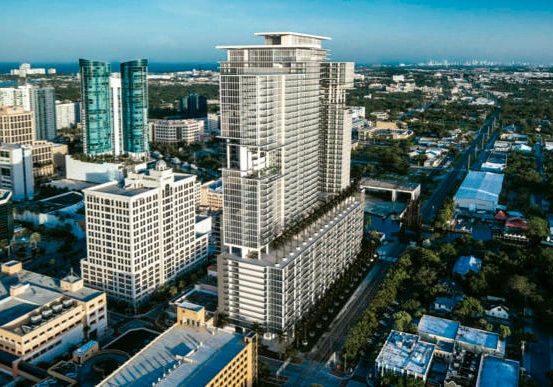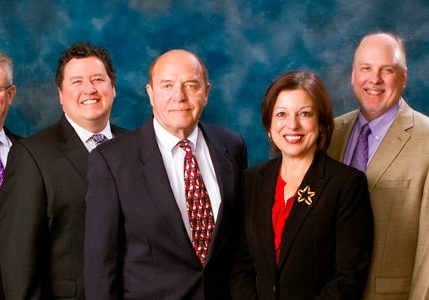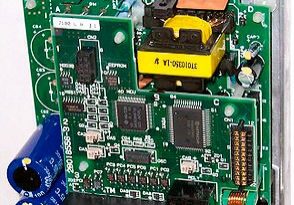Establishing an Elevator Compliance Organization
Nov 1, 2016

An introduction to the code structure in the U.S. and how compliance with it can be ensured.
An elevator, or lift, is a type of vertical transportation that moves people or goods between floors of a building, vessel or other structure.[1] What makes the modern elevator different from other means of transportation, such as cars, trains or airplanes? Cars are driven by a licensed driver, trains by qualified conductors and airplanes by trained pilots. To the best of my knowledge, elevators are the only means of transportation operated by the general public. The difference is that, while a driver, conductor or pilot is responsible to ensure the safety and welfare of his or her passengers, the elevator user is generally not responsible for the safe operation of the elevator. In the U.S., the elevator owner is fully responsible for the safety and welfare of the riding public unless owner responsibilities are specifically assigned by lease to a lessee. More importantly, the owner of the elevator generally does not have the necessary expertise to ensure that the vertical-transportation system is safe for the riding public to use. The owner typically relies on an elevator contractor to perform the required tasks to ensure the safety and welfare of the riding public.
In a perfect world, the elevator contractor would follow established standards to satisfy the requirements needed to provide the reliability of the equipment and deliver the expected level of safety. In reality, without a system to verify conformity with established standards, the level of compliance might vary in both quality and consistency from one contractor to another. Elevators could be installed and maintained by using different interpretations.
Therefore, to inspect and verify compliance to existing codes and standards, intervention by a third-party elevator compliance organization (often referred to as an AHJ) is normally made. The third-party compliance organization, either working as an AHJ or a “certified elevator inspection company,” will assist the building owner in monitoring the work of the elevator contractor. Certified elevator inspectors will follow applicable rules and regulations to achieve consistency and the required safety for the riding public. A list of deficiencies (often referred to as a “list of violations”) will be issued and delivered to the owner for correction within a specified time. Once compliance is achieved, a certificate of operation is issued by the AHJ or the certified elevator inspection company.
National Code Structure
The U.S. elevator code is published by the American Society of Mechanical Engineers (ASME) and meets the criteria of the American National Standards Institute. Adoption and enforcement are made at the state, county and/or municipal level. For the purpose of this article, the term “elevator” is meant to represent any equipment covered by ASME A17.1, Part 1, Section 1.1, Requirement 1.1.1 and 1.1.2, as applicable.
The ASME Standards Committee that approves the code or standard is balanced to ensure that individuals from competent and concerned interests have the opportunity to participate. The proposed code or standard is made available for public review and comment, providing an opportunity for additional public input from industry, academia, regulatory agencies and the public at large. Once published, the code becomes effective six months after the date of issuance. There are currently two methods for meeting the requirements dictated by the code:
- The prescriptive method describes, in detail, exactly which materials are to be used and how they are assembled and inspected.
- The performance-based method provides documentation and a Certificate of Conformance by an approved Accredited Elevator/Escalator Certification Organization (AECO). The AECO certifies to the elevator company that the design and products of any system, subsystem or component are equivalent or superior to the current prescriptive standards and confirms compliance with the applicable global essential safety requirements.
Both methods can be used individually or combined.
While the code is written by a voluntary consensus standard, its enforcement is typically regulated by an AHJ. The AHJ could employ inspectors, delegate the authority to private inspectors or use a combination of both. ASME develops and publishes elevator codes for use nationwide. Each AHJ has the choice of deciding which edition of the code is adopted and can add rules and regulations for special local requirements. The 18th edition of ASME A17.1 was issued in April 2007, and subsequent editions are a binational standard, including Canada, named ASME A17.1/CSA B44. All former differences between ASME A17.1 and CSA B44 have been incorporated under the same code. Certain requirements are applicable only in Canadian jurisdictions and clearly prefaced in the body of the code by the phrase “In jurisdictions enforcing the NBCC. . . .” This article covers only procedures pertinent in the U.S.
Establishing an Elevator Compliance Organization
Generally, adoption and enforcement of elevator, building and fire codes occur at the state level and are then delegated to counties or municipalities. Some counties may opt out of having a separate elevator jurisdiction for lack of funds or interest (Figure 1).
Statutes
The state legislative authority issues a formal statute to declare policy on elevator safety. The statute becomes law when signed by the governor. It will reference a chapter and have a title, such as “Elevator Safety Act.” It states the purpose, general requirements, inclusions, exclusions, disciplinary action, inspections, maintenance contracts, certificates, enforcement of law, penalties, reporting of accidents, delegation of authority to municipalities or counties, unlicensed activity and registration of certified inspectors, and will establish the minimum standards and requirements. A department will be assigned rulemaking authority to carry out the provisions of the chapter.
Public Participation
An Elevator Advisory Review Council provides technical assistance to the department assigned to enforce the provisions of the Elevator Safety Act. The council is comprised of members appointed by the secretary of the department. Members are selected with the intent of representing a balanced contribution from different groups, such as one representative from each: a major elevator manufacturing company; an elevator service company; a building design profession; the general public; a local government in the state; a building owner or manager; a laborer involved in the installation, service and repair of elevators; and a private inspection service. Additional members can be added to the council if it is determined a specific interest should be represented.
AHJ
Often referred to as the “Bureau of Elevator Safety,” the department selected to carry out the provisions of the chapter will assign the responsibility for implementation of the Elevator Safety Act to a specialized organization headed by a chief elevator inspector. Administrative rules are used to implement safety standards, permit fees, annual certificates of operation, elevator-company license registration, inspection-company license registration, continuing-education requirements, service/maintenance contracts, variances, disciplinary guidelines, citations, enforcement and penalties. Other special requirements may be added. The Bureau of Elevator Safety can decide to administer and enforce elevator regulations statewide or assign operational authority to delegated counties or cities as outlined in Figure 1.
Choosing a Suitable Structure
There are several options presently used to structure the enforcement of the applicable provisions of an elevator compliance organization. The main options are briefly described as follows. Additional options can be obtained by structuring any other possible combination to satisfy different needs.
Full State Control
A structure of full state control is one in which the Bureau of Elevator Safety hires full-time inspectors. The inspectors will be the only entity authorized to perform elevator safety inspections. Field offices in strategic locations are under the direct supervision of the bureau. Inspectors and inspector supervisors must meet the qualifications of ASME QEI-1: Standard for the Qualification of Elevator Inspectors.
Combined State Control
A structure of combined state control is one in which the Bureau of Elevator Safety contracts inspectors to work with full-time inspectors. Unless otherwise noted, a contract inspector will have the same authority as a state elevator inspector and meet the same qualification standards.
Delegation of Authority
A delegation of authority involves the Bureau of Elevator Safety delegating jurisdictional authority to counties or cities. The bureau will retain jurisdiction of geographical areas not covered by the contracted AHJs. It enters into contract with municipalities or counties, which will issue construction permits and certificates of operation; provide for the inspection of elevators, including temporary operation inspections; and enforce the applicable provisions of the building code as required by the Elevator Safety Act. The contracted AHJs may choose to require inspections to be performed by its own inspectors or by private certified elevator inspectors.
The agreement will include a provision the AHJ shall maintain, for verification by the bureau, copies of all applications for permits issued, variances, a copy of each inspection report, and proper records showing the number of certificates of operation issued and a provision that each inspection be conducted by a certified elevator inspector meeting ASME QEI-1: Standard for the Qualification of Elevator Inspectors. The AHJ may impose fees and assess and collect fines as part of its enforcement activities. It does not have the authority to issue or take disciplinary action against a certificate of competency, an elevator inspector certification, an elevator technician certification or an elevator company registration. However, the bureau could initiate disciplinary action against a registration or certification at the request of the contracted AHJ. It may inspect elevators and conduct administrative audits in the contracted AHJ for the purpose of determining the provisions of the contract are being met.
Regulated Privatization
In regulated privatization, the responsibility for inspections and tests is transferred to certified private elevator inspectors. These inspectors will be required to meet and maintain the requirements of ASME QEI-1: Standard for the Qualification of Elevator Inspectors and annually obtain and renew their license with the Bureau of Elevator Safety.
The Bureau of Elevator Safety certifies and licenses private elevator inspectors to conduct elevator safety inspections for new installations, major modernizations, repairs and periodic inspections and tests as required by the Elevator Safety Act. Copies of all inspection reports are sent to the bureau, and only a clear/complied report will generate the issuing of a certificate of operation. The certificate will not be issued or renewed unless a clean inspection report by the certified private elevator inspector is received by the bureau. The elevator unit cannot be placed in use unless a new certificate is issued. Expired certificates are subject to citation and subsequent fines. The delinquent elevator unit may be removed from service at the discretion of the certified private elevator inspector if the elevator is determined to be unsafe for public use. All applications for permits for new installations, variances, major modernization and repairs will require approval by the bureau prior to starting any work.
Considering an Innovative Structure
Creating technology without proper rules may have seemed foolish a few years ago, yet we are on our way to exposing ourselves to just such risk unless we review the existing regulatory process of permitting, inspection and testing excluded from the performance-based code.
The performance-based method relies upon a Certificate of Conformance issued by an AECO and supplemented by a maintenance control program (MCP) written by the elevator company to guide the certified elevator inspector performing inspection and testing of its equipment. In other words, the elevator contractor is writing the process for inspections and testing.
The divergent frameworks of the prescriptive- and the performance-based code raise fundamental questions about the system of standards that exist to support each code, how they are structured and developed and how they are used and linked. Implementing a combined prescriptive- and performance-based system presents the most challenging task for the elevator manufacturer, installer and AHJ today.
It is possible that AHJs will eventually attain a high degree of confidence in the performance-based design concept and establish a new framework for inspections and testing. Another intriguing possibility to consider — one which would transform and revolutionize the existing inspection process — is that the AHJs will relinquish their responsibility for acceptance inspections, periodic inspections and testing to elevator companies. Such a possibility is briefly explored as follows.
Full Privatization
Full privatization involves the transfer of responsibility for permitting new installations and major alterations to local building departments and assigning responsibility for all acceptance inspections and tests, periodic inspections and witnessing of tests and elevator certificates of operation to the elevator contractor. Certified elevator inspectors and inspector supervisors employed by the elevator contractors will be compelled to meet and maintain the requirements of ASME QEI-1: Standard for the Qualification of Elevator Inspectors. The local building department will ascertain that the elevator contractor applying for a permit to install or alter is licensed by the Bureau of Elevator Safety. The elevator contractor will provide a statement that the elevator equipment and installation will conform with the requirements of:
- The current edition of ASME A17.1 and any other applicable codes as required by the Elevator Safety Act
- Some of the requirements in the current edition of ASME A17.1 and, for systems, subsystems, components or functions that do not conform with certain requirements in ASME A17.1, conformance with the applicable requirements in ASME A17.7
- The current edition of ASME A17.7
The selection chosen will clarify whether the installation will conform to a prescriptive code, combination prescriptive/performance based or performance based. The intent of this clarification is to determine that the permit to install recognizes the criteria used by the elevator contractor. The building department will not issue a certificate of building occupancy unless a certificate of operation is posted in each elevator cab.
Acceptance inspection and tests will be carried out by certified elevator inspectors employed or under the contract of the elevator contractor. Prior to starting the elevator acceptance inspection process, the certified elevator inspector will review all necessary documentation, certificates of conformance, drawings, variances and the MCP provided by the elevator contractor to ascertain compliance with codes and the application for permit to install. Upon completion of the inspection and tests, the elevator contractor will receive a certificate of operation signed by the certified elevator inspector and post the same in each elevator cab.
At this point, the responsibility for the safety and welfare of the public is transferred from the elevator contractor to the building owner. The building owner will be responsible for signing a service contract with an elevator company. Such a contract will include service, parts, periodic inspections and tests, and the issuing of a certificate of operation signed by the certified elevator inspector. Expired certificates are subject to citation and subsequent fines by the local building or fire department. The delinquent elevator unit may be removed from service at the discretion of the certified private elevator inspector if the elevator is determined to be unsafe for public use.
Permits for alterations, repair or replacement will be obtained by the elevator contractor through the local building department and follow the same process as acceptance inspections. Elevator company registration and certification, elevator inspection company registration, elevator inspector certification and elevator technician certification will be issued by the Bureau of Elevator Safety and renewed annually. Certified elevator inspectors and inspector supervisors must meet the qualification requirements of ASME QEI-1: Standard for the Qualification of Elevator Inspectors. Accident reports will be sent to the bureau for further investigation.
Summary
The section “Choosing a Suitable Structure” provides a brief description of the different options presently used to structure the enforcement of the applicable provisions of an elevator compliance organization. The structures described were implemented to satisfy the requirements of prescriptive codes and have been very effective in protecting the riding public. The mandated detailed procedures combined with QEI-1 certification ensure that the elevator equipment is safe and reliable. The section “Considering an Innovative Structure” provides an option imposed by the introduction of the performance-based code published by ASME in March 2007.
Certified elevator inspectors and inspector supervisors are obligated to meet and maintain the requirements of ASME QEI-1: Standard for the Qualification of Elevator Inspectors and renew their certification annually with the state. Additionally, proof of continuous education and training must be provided by the elevator contractor to certified elevator inspectors in the design, installation and requirements described in the MCP manual. The MCP manual is used to define the process for inspection and testing of new technology and is compiled by the elevator contractor employing the certified elevator inspector.
Conclusion
Technological progress should not and cannot be stopped. Elevator companies have been aggressive in introducing new technology supported by the performance-based code. Elevator systems can think and move faster and more intelligently. The sophistication of an intelligent system may require specialized and pertinent knowledge to verify compliance with codes and standards. It is, therefore, time that the entities that design, manufacture and install this sophisticated equipment assume the responsibility for the final inspection and certification stating that the equipment delivered is safe for public use. Subsequently, the same equipment must be regularly certified for safe performance by a maintenance company.
For better delegation of responsibility, the role of the jurisdictional authorities could be reduced to adoption of the national standards as published by ASME with the incorporation of any local requirements, certification of elevator companies, elevator technician certification, certification of elevator inspectors and inspection supervisors, variances, and accident reporting. Local building or fire departments at the county or municipal level could be delegated with permitting new installations or alterations/repair, and the enforcement of expired certificates of operation.
Under this innovative structure, the elevator company would no longer assign inspections and tests to a third-party inspection company. Such functions would be included in the scope of work of the elevator company with full responsibility. Are the elevator companies ready for this challenge?
References
[1] Wikipedia. “Elevator” (en.wikipedia.org/wiki/Elevator).
[2] Antona, John, CEIS. “Representation of an Authority Having Jurisdiction,” City of Miami Beach. Elevator Technology 18: Proceedings of Elevcon Lucerne 2010, published by the International Association of Elevator Engineers.
[3] Antona, John, CEIS. “The Revolutionary Future of Elevator Technology in North America,” Elevator Technology 19: Proceedings of Elevcon USA 2012, published by the International Association of Elevator Engineers.
Get more of Elevator World. Sign up for our free e-newsletter.








